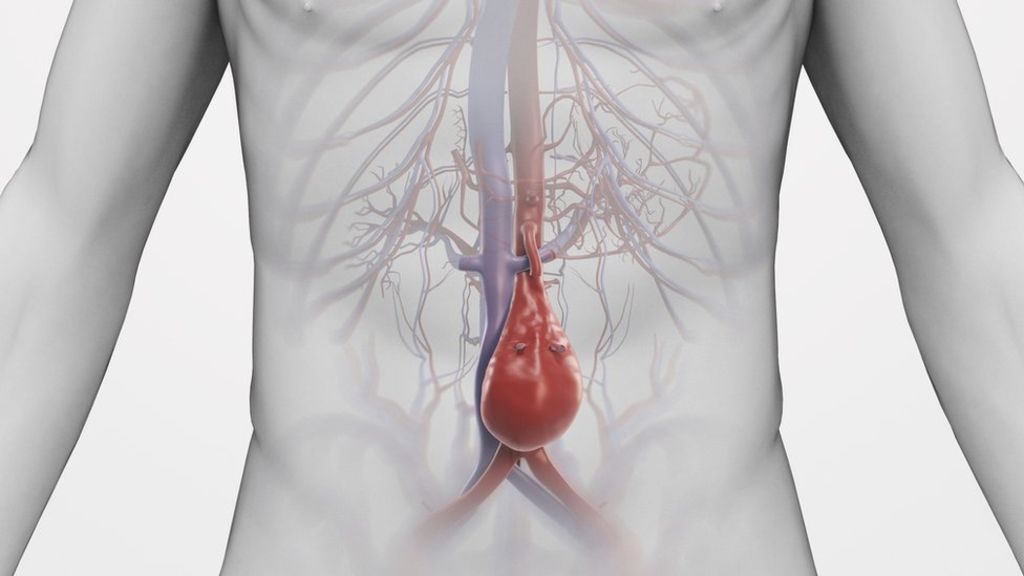An Abdominal Aortic Aneurysm (AAA) is a condition in which the aorta, the largest artery in the body, stretches and balloons in the belly region. It is a medical emergency if an AAA ruptures.
The abdominal aorta is the main artery that originates in the heart. As the lining weakens from age and other risk factors, the vessel wall thins and expands. The most common location for this type of aneurysm is between where the aorta divides to supply blood to the kidneys and where it divides to supply blood to the pelvis and legs.
Abdominal ultrasound is the standard approach for AAA screening. Ultrasound imaging uses a small probe, called a transducer, and gel placed directly on the skin. High-frequency sound waves travel from the probe, through the gel, into the body. The probe collects the sounds that bounce back. A computer uses those sound waves to create the images for the exam.
Ultrasound is painless and non-invasive.
For those who do not meet the insurance coverage criteria below or do not have coverage, Capitol Imaging Services will perform this test for a fee of $150.
When would I get an Abdominal Aortic Aneurysm screening?
The United States Preventive Services Task Force recommends that men ages 65 to 75 who have ever smoked should have a one-time screening for abdominal aortic aneurysms using abdominal ultrasound. Men 60 and older with a family history of abdominal aortic aneurysms should consider regular screening for the condition.
Medicare Part B (Medical Insurance) covers a one-time abdominal aortic aneurysm ultrasound.

Who is eligible?
People with Part B who are at risk. You’re considered at risk if you meet one of these criteria:
- you have a family history of abdominal aortic aneurysms
- you’re a man age 65 to 75 and have smoked at least 100 cigarettes in your lifetime.
What Will I Experience?
For most ultrasound exams, you will lie on your back on an exam table. You may have your position adjusted to either side in order to improve the quality of the images captured during the exam.
An ultrasound technologist will apply a warm water-based gel to the area of the body being studied. The gel will help the transducer make secure contact with the body and eliminate air pockets between the transducer and the skin that can block the sound waves from passing into your body. The transducer is placed on the body and moved back and forth over the area of interest until the desired images are captured.
There is usually no discomfort from pressure as the transducer is pressed against the area being examined. However, if scanning is performed over an area that is tender or sensitive, you may feel some pressure or minor discomfort from the transducer.
Once the exam is complete, the clear ultrasound gel will be wiped off your skin. Any portions that are not wiped off will dry quickly. The ultrasound gel does not usually stain or discolor clothing.
Typically, ultrasound imaging of the abdomen for an abdominal aortic aneurysm takes approximately 30 minutes to complete.


